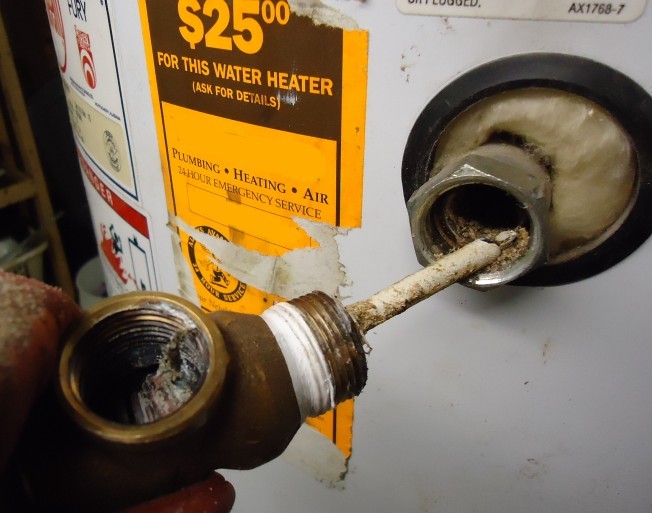Simple Guide to Caring for Your Home's Hot Water System
Simple Guide to Caring for Your Home's Hot Water System
Blog Article
What're your opinions about What Kind of Maintenance Do Water Heaters Need??

Hot water is crucial for daily comfort, whether it's for a rejuvenating shower or cleaning recipes. To guarantee your warm water system runs effectively and lasts much longer, regular upkeep is essential. This write-up provides sensible tips and understandings on how to maintain your home's hot water system to avoid disruptions and pricey repair services.
Intro
Maintaining your home's warm water system might appear difficult, but with a few basic actions, you can ensure it operates smoothly for several years to come. This guide covers whatever from recognizing your hot water system to DIY upkeep tips and understanding when to call professional assistance.
Relevance of Maintaining Your Hot Water System
Normal upkeep not only prolongs the life expectancy of your warm water system yet also ensures it runs efficiently. Overlooking maintenance can cause lowered efficiency, higher power costs, and also early failure of the system.
Signs Your Hot Water System Requirements Upkeep
Understanding when your warm water system needs focus can protect against significant problems. Look out for indicators such as inconsistent water temperature level, unusual sounds from the heater, or rustic water.
Flushing the Hot Water Heater
Flushing your hot water heater removes sediment accumulation, enhancing efficiency and prolonging its life.
Checking and Replacing Anode Rods
Anode poles prevent corrosion inside the tank. Checking and changing them when worn out is essential.
Complex Problems Needing Expert Aid
Examples include major leakages, electric troubles, or if your hot water heater is consistently underperforming.
Regular Professional Maintenance Perks
Expert upkeep can consist of comprehensive evaluations, tune-ups, and ensuring compliance with safety and security standards.
Evaluating and Adjusting Temperature Level Settings
Readjusting the temperature setups makes sure optimal efficiency and security.
DIY Tips for Maintenance
You can do a number of maintenance jobs on your own to maintain your warm water system in leading condition.
Looking for Leakages
Regularly evaluate pipelines and links for leaks, as these can bring about water damage and higher costs.
Comprehending Your Hot Water System
Prior to diving right into upkeep jobs, it's useful to recognize the basic components of your hot water system. Generally, this includes the water heater itself, pipelines, anode rods, and temperature controls.
Regular Monthly Upkeep Tasks
Regular monthly checks can help capture minor issues before they escalate.
Testing Stress Relief Valves
Examining the stress safety valve guarantees it functions appropriately and protects against too much pressure buildup.
Insulating Pipes
Insulating warm water pipes lowers warm loss and can save power.
When to Call a Professional
While DIY maintenance is beneficial, some concerns require specialist know-how.
Conclusion
Routine upkeep of your home's hot water system is essential for performance, longevity, and price financial savings. By complying with these tips and knowing when to look for expert help, you can make certain a trusted supply of hot water without unanticipated disruptions.
How to Maintain an Instant Hot Water Heater
Before tinkering with your hot water heater, make sure that it’s not powered on. You also have to turn off the main circuit breaker and shut off the main gas line to prevent accidents. Also turn off the water valves connected to your unit to prevent water from flowing into and out of the appliance. 2. When you’re done, you have to detach the purge valves’ caps. These look like the letter “T†and are situated on either side of the water valves. Doing so will release any pressure that has accumulated inside the valves while at the same time avoid hot water from shooting out and burning your skin. 3. When the purge valves’ caps are removed, you have to connect your hosing lines to the valves. Your unit should have come with three hoses but if it didn’t, you can purchase these things from any hardware or home repair shops. You can also get them from retail stores that sell water heating systems. Read the user’s manual and follow it to complete this task properly. When the hosing lines are connected, open the purge port’s valves. 4. You should never use harsh chemical cleaners or solutions when cleaning your unit. Make use of white vinegar instead. It should be undiluted and you’ll probably use about 2 gallons. 5. Now flush your water heater. This task should probably take about 40 minutes. We can’t give you specific directions for this because the procedure is carried out depending on the type, model and brand of your heater. With that being said, refer to the user’s manual. 6. When you’re done draining the unit, you have to turn off the purge port valves again. Remove the hosing lines that you earlier installed on each of the water valves. Put the valve caps (purge port) back in their respective places and be very careful so as not to damage the rubber discs that are found inside these caps. 7. Now that everything’s back in place, check your user’s manual again to find out how to reactivate your water heating system. 8. Once it is working, turn one of your hot water faucets on just to let air pass through the heater’s water supply pipes. Leave the tap on until water flows smoothly out of it. https://www.orrplumbing.com/blog/2014/september/how-to-maintain-an-instant-hot-water-heater/

I discovered that post about What Kind of Maintenance Do Water Heaters Need? while doing a search on the web. Loved our write-up? Please share it. Help others locate it. Thank you for your time. Come back soon.
This Site Report this page